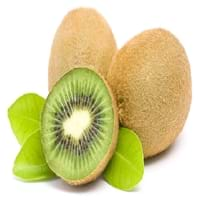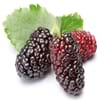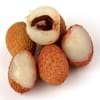Health Benefits
Anti-aging benefits, Boosts immune system, Cancer prevention, Flu treatment, Hair care, Heart care, Improves eye vision, Increases metabolic rate, Kidney stone treatment, Maintains healthy cholesterol level, Skin cleansing, Skin rejuvenation, Treatment of common cold, Treatment of skin Diseases
Asthma treatment, Heart care, Prevents constipation, Treatment of skin Diseases
General Benefits
Boosts immune system, Controls blood sugar levels, Flu treatment, Improves eye vision, Maintains healthy cholesterol level, Treatment of common cold
Boosts immune system, Controls blood pressure, Eye care, Helps in weight loss
Skin Benefits
Anti-aging benefits, Skin cleansing, Treatment of skin diseases
Brightens and lightens complexion, Heals sunburn, Reduces wrinkles, Skin rejuvenation, Treatment of acne, Treatment of dark spots, Treatment of skin diseases
Hair Benefits
Protects hair, Regulates hair growth
Prevents hair loss, Promotes longer and healthier hair, Treatment of dandruff
Allergy Symptoms
Breathing difficulty, Itching, Nasal congestion, Redness of eyes, Runny nose, Sneezing
Abdominal pains, Anaphylaxis, Breathing difficulty, Itching in tongue and other parts of mouth, Itching sensation in throat, Swelling of mouth, tongue or lips, Vomiting
Side Effects
Decrease in blood sugar levels, Allergic reaction
Allergic reaction, Diarrhoea, Skin rash, Possibly unsafe during pregnancy
Best Time to Eat
Best if taken as a breakfast (or empty stomach), As a snack in the late afternoon, Don't consume at night and before bed, Eat the fresh ones, avoid mixing with any other foods, don't eat after meal., Morning time (before lunch)
Any time except an hour after meal, Don't consume at night and before bed
Vitamin B5 (Pantothenic Acid)
Not Available
Vitamin C (Ascorbic Acid)
Vitamin K (Phyllochinone)
Calories in Fresh Fruit with Peel
Calories in Fresh Fruit without Peel
Not Available
Not Available
Calories in Frozen Form
Not Available
Calories in Canned Form
Not Available
Season
Spring, Summer
Spring, Summer, Winter
Varieties
Charparral, Pendula, Teas, Bellaire and Lingan
Zhong Hua, Jing Li, Ruan Zao, Mao Hua and Huang Yan
Color
Pink, Purple, White
Brown, Green
Taste
Tart
Sour-Sweet, Tangy
Soil Type
Clay, Loam
Well-drained
Climatic Conditions
Sunny
Cold, Sunny
Facts about
- It can take up to 10 years for a tree to produce mulberry fruit.
- Mulberry leaves are fed to silkworms to enhance silk production.
- In Germany, they say that devil uses root of mulberry tree to polish his boots.
- The name Kiwi is due to the resemblance with 'Kiwi' bird.
- Animals like monkeys and deer also consume Kiwifruit.
- Originated in china, this fruit is also called as 'Chinese gooseberry.'
Other Countries
Colombia, Egypt, India, Indonesia, Kenya, Mexico, Pakistan, Peru, Russia, United States of America
Chile, France, Greece, Iran, Japan, New Zealand, Portugal, Turkey, United States of America
Top Importer
Not Available
United States of America
Top Exporter
China
New Zealand
Botanical Name
Morus Alba
Actinidia deliciosa
Synonym
Morus atropurpurea or Morus multicaulis
Not Available
Subkingdom
Tracheobionta
Tracheobionta
Division
Magnoliophyta
Magnoliophyta
Class
Magnoliopsida
Magnoliopsida
Subclass
Alismidae
Dillenhidae
Family
Moraceae
Actinidiaceae
Species
M. alba
A. deliciosa
Generic Group
Mulberry
Kiwi
Compare Mulberry and Green Kiwi
It is important compare Mulberry and Green Kiwi as both the fruits have a different nutritional value. Their comparison can be done on the basis of their vitamin and mineral content, calories, benefits as well as characteristics, making it easier for us to choose the best fruit for our diet. Their general health benefits are as follows:
Mulberry Benefits: boosts immune system, controls blood sugar levels, flu treatment, improves eye vision, maintains healthy cholesterol level and treatment of common cold.
Green Kiwi Benefits: boosts immune system, controls blood pressure, eye care and helps in weight loss.
Fruits are also used as a remedy for various hair problems. The hair benefits of Mulberry are: protects hair and regulates hair growth and hair benefits of Green Kiwi are: prevents hair loss, promotes longer and healthier hair and treatment of dandruff. Some fruits are known to cause allergic reactions. The allergy symptoms of first fruit are: breathing difficulty, itching, nasal congestion, redness of eyes, runny nose and sneezing and the symptoms of second fruit are: abdominal pains, anaphylaxis, breathing difficulty, itching in tongue and other parts of mouth, itching sensation in throat, swelling of mouth tongue or lips and vomiting. Get sorted Mulberry vs Green Kiwi comparison with the help of fruit comparison tool by fruitvs.com.









